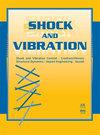基于分数阶导数和时滞反馈的随机共振轴承故障诊断
IF 1.2
4区 工程技术
Q3 ACOUSTICS
引用次数: 0
摘要
噪声的好处可以在非线性系统中发现,其中一种共振可以将噪声注入系统以增强感兴趣的弱信号,包括随机共振、振动共振和混沌共振。通过在非线性系统中添加一些元素,可以进一步改善噪声的这些好处。考虑到分数阶导数和时滞反馈的时变记忆使得非线性系统利用其历史信息,并通过反馈控制使非线性系统的输出影响输入,因此,我们尝试设计分数阶导数和时滞反馈共同增强的随机共振(SR)模型。其中,分数阶导数和时滞会增强非线性系统对历史信息的记忆,反馈会利用系统的输出来精确控制系统。因此,我们希望融合它们的优点,进一步提高SR的微弱信号检测性能。然后将其应用于轴承故障诊断,并与不含分数阶导数和时滞反馈等诊断方法的诊断结果进行比较。实验结果表明,以局部信噪比为优化目标函数的分数阶导数和时滞反馈增强的SR能增强轴承的早期故障特征,优于没有分数阶导数和时滞反馈甚至信息图的方法。本文章由计算机程序翻译,如有差异,请以英文原文为准。
Fractional Order Derivative and Time-Delay Feedback Enabled Stochastic Resonance for Bearing Fault Diagnosis
The benefits of noise can be found in nonlinear systems where a type of resonances can inject the noise into systems to enhance weak signals of interest, including stochastic resonance, vibrational resonance, and chaotic resonance. Such benefits of noise can be improved further by adding some items into the nonlinear systems. Considering the time-dependent memory of fractional-order derivative and time-delay feedback which makes the nonlinear systems take advantage of their historical information and makes the output of nonlinear systems affect the input by feedback control, therefore, we attempt to design the model of stochastic resonance (SR) enhanced by both fractional-order derivative and time-delay feedback. Among them, fractional-order derivative and time delay would reinforce the memory of nonlinear systems for historical information and feedback would use the output of systems to control the systems precisely. Therefore, we hope that their advantages would be fused to improve the weak signal detection performance of SR further. Then, it would be applied to bearing fault diagnosis and compared with that without fractional-order derivative and time-delay feedback and even other diagnostic methods. The experimental results indicate that the SR enhanced by fractional-order derivative and time-delay feedback where a local signal-to-noise ratio is designed as the objective function to optimize these tuning parameters of the proposed method could enhance early fault signature of bearings and outperform that without fractional-order derivative and time-delay feedback and even infogram method.
求助全文
通过发布文献求助,成功后即可免费获取论文全文。
去求助
来源期刊

Shock and Vibration
物理-工程:机械
CiteScore
3.40
自引率
6.20%
发文量
384
审稿时长
3 months
期刊介绍:
Shock and Vibration publishes papers on all aspects of shock and vibration, especially in relation to civil, mechanical and aerospace engineering applications, as well as transport, materials and geoscience. Papers may be theoretical or experimental, and either fundamental or highly applied.
 求助内容:
求助内容: 应助结果提醒方式:
应助结果提醒方式:


